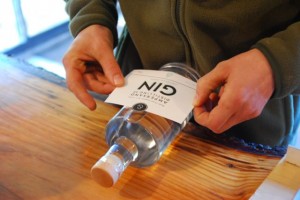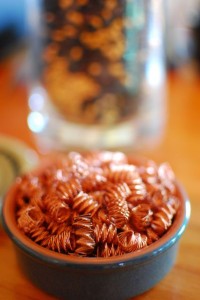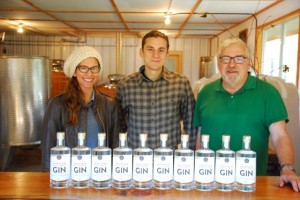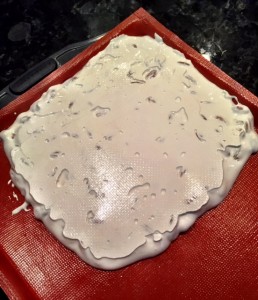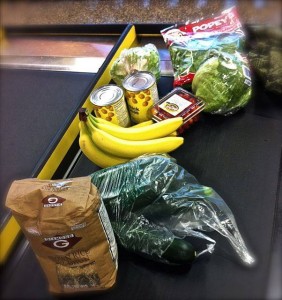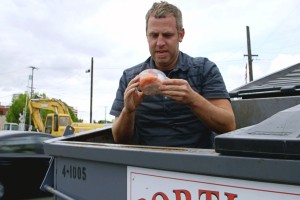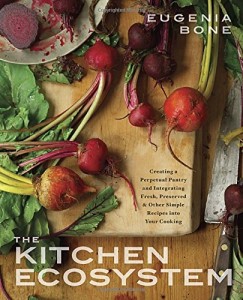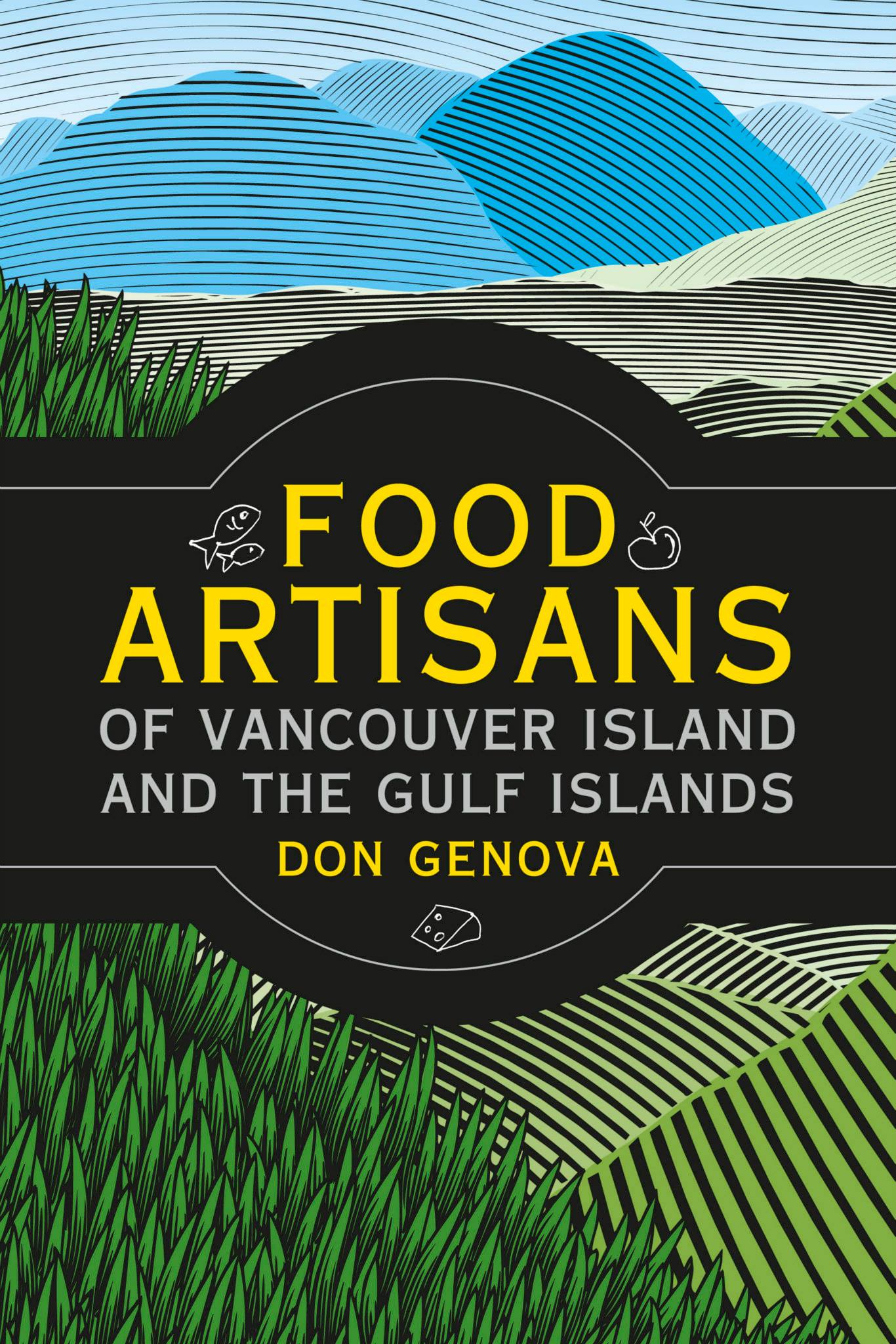It’s getting down to the crunch. One week left until Christmas and you still don’t have the perfect gift for the cook on your list. I visited Jo-Ann Roberts on her next-to-last day as host of All Points West on CBC Victoria with a pretty good-sized basket full of stuff.
I took a bit of a different approach this year. Instead of bringing you all the latest gadgets, I’m taking a ‘you must have one of these’ in the kitchen of whomever you’re gifting. I took this angle for a number of reasons: Parents of next year’s high school graduates who are already thinking about their kids starting moving into their own apartment. Going to a friend’s place and helping out in a kitchen that is hopelessly ill-equipped. And, having just come back from renting a holiday place that had the worst set of kitchen knives, EVER! So here are a few essentials I think everyone should have. If the person you want to buy for is deficient in even one of these pieces of gear, you have a perfect gift. You might have to do a bit of snooping, but worth it in the long run!

Messermeister peeler
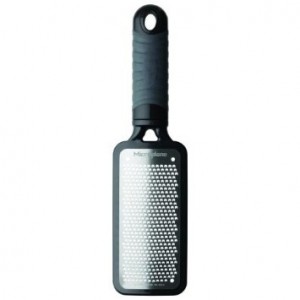
Microplane grater
Starting with stocking stuffers. Everyone should have one really good peeler and one really good utility knife. I really like the ones from Messermeister. The peeler has a serrated knife which is great for rough-skinned things like ginger root or a fuzzy kiwi fruit. The utility knife is serrated as well and cuts through tomatoes in an instant and makes the slices as thin as a sheet of paper. And a microplane grater, don’t forget that, your giftee won’t want to use any other grate after trying this one.
Along with the utility knife you need one good general purpose chef’s knife. And here you need to spend a bit of money. But don’t forget that a good knife will last a lifetime. Right now I think Japanese knives really are the best deal for sharpness and durability. I really like the line from Global. They are all metal, so you never have to worry about the handles breaking, they’re light, and even the small 6-inch chef’s knife I brought in to show Jo-Ann can be used for almost anything. You might also want to consider the Mac or Shun line, but they are a little more pricey.
Global Knife

Larchwood End Grain Cutting Board
With knives you need a cutting board, and I’ve become a real fan of wooden, end-grain cutting boards. They cost a lot but again, they last forever. I have one from Larch Wood Enterprises in Cape Breton, but you don’t have to go that far, in Brentwood Bay you will find Acres Away Woodworks, beautiful cutting boards, made by artisan Neil Bosdet, but also knife blocks, rolling pins, and pizza peels.

T-Fal non-stick pan
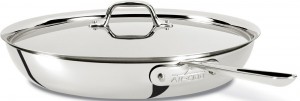
All Clad pan with lid
I’m going to say 2 good fry pans. One that is non-stick that you don’t have to spend a ton of money on, like the one I have from T-Fal. One that ONLY gets used to cook eggs in on relatively low heat. It will last a long time. Then, another frypan, anything with high sides and a heavy bottom, with a lid. Could be cast-iron, which will last forever, or stainless steel with a layer of copper in it. All-Clad, Lagostina, Cuisinart all make good ones. You can use that fry pan for almost everything else, simmered dishes, stews, with a metal or ovenproof handle so you can put it in the oven, even under the broiler. And then one good stockpot or Dutch Oven style pot. Again, a heavy bottom so you can use it to brown foods, but at least 6 to 8 litres in size so you can put your whole turkey carcass in there so you can get more food value out of that turkey!

Instant-read digital thermometer
ONE basic suggestion when it comes to food safety… a good instant-read thermometer to help you determine degree of doneness and proper cooking temps for ground beef and chicken. If you think that’s too plain a gift, how about a remote thermometer probe? I also have one from iDevices that will talk to my iPhone via Bluetooth, you could use it for your turkey or for your steak or salmon you’ve got going outside on your barbecue.

Abeego wraps
It’s not a must-have but it caught my attention this year. Abeego wraps, which are made from hemp and cotton cloth and blended with beeswax and jojoba oil, are made right here in Victoria and are a great reusable alternative to wax paper and plastic wraps. They warm up in your hands and become really flexible, then you just wrap them around a piece of cheese, for example and they stiffen in the fridge. You just wash them in cold water after you use them and come in a variety of sizes.
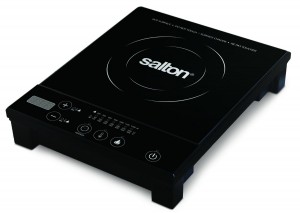
Salton induction burner
And for about $100, you might consider one of those portable induction burners, especially if the person you’re buying for entertains a lot and need a spare burner. They’re much safer and easier to use than traditional electric hot plates or those finicky butane heaters, as long as you have access to an electrical outlet.
This is my last column for 2014. I’ll be back next year with new Island Artisans and features on sustainable eating. Happy Holidays, everyone!

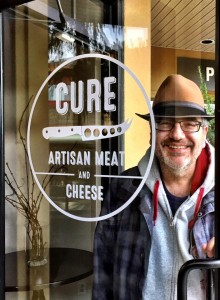


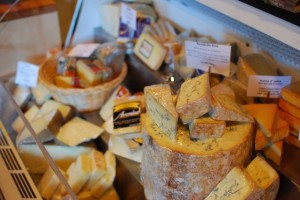
 There was a bit of a tangy aroma in the CBC Victoria studio this afternoon as I presented a Mason jar of my homemade sauerkraut to All Points West host Jo-Ann Roberts. I made it from scratch with just five ingredients. Cabbage. Ginger. Garlic. Carrots. And salt. Squish them all together and wait a week or so and you get sauerkraut. If you remember back in April of this year I introduced you to Melanie Furman on Salt Spring Island and her
There was a bit of a tangy aroma in the CBC Victoria studio this afternoon as I presented a Mason jar of my homemade sauerkraut to All Points West host Jo-Ann Roberts. I made it from scratch with just five ingredients. Cabbage. Ginger. Garlic. Carrots. And salt. Squish them all together and wait a week or so and you get sauerkraut. If you remember back in April of this year I introduced you to Melanie Furman on Salt Spring Island and her 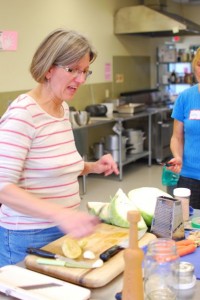
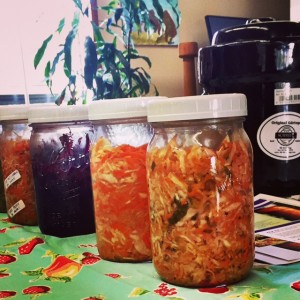
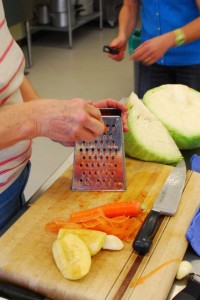
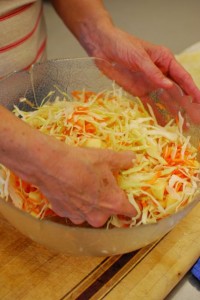
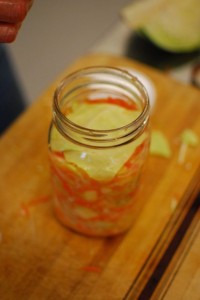
 Changes to liquor laws in BC have meant good news for anyone with an interest in creating spirits for the local market. Small to large distilleries are springing up and the entrepreneurial spirit of the industry is alive and well. This week on CBC Radio’s All Points West I profiled of one of the new kids on the block.
Changes to liquor laws in BC have meant good news for anyone with an interest in creating spirits for the local market. Small to large distilleries are springing up and the entrepreneurial spirit of the industry is alive and well. This week on CBC Radio’s All Points West I profiled of one of the new kids on the block.
